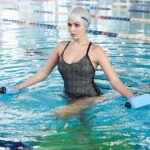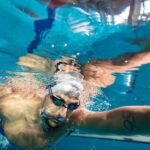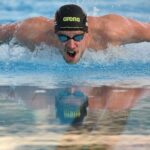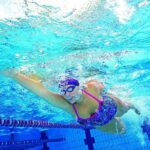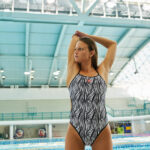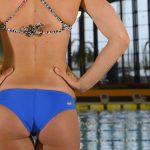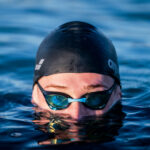Propel Yourself With a Stronger Breaststroke Pull
Breaststroke may seem like the most chilled out of all the swimming strokes. It is the go-to stroke for beginners, just behind the doggy paddle. Since it suits almost all swimmer’s abilities as well, it doesn’t ask too much of the body at slower speeds.
But, if we pull it apart and improve every detail of the stroke from the upper body’s breaststroke pull to the lower body’s breaststroke kick, we quickly find that this is arguably swimming’s most complex stroke that can move your body along the surface of the water at serious speed when done correctly.
In this article, we’ll find out what exactly the breaststroke pull is and how it fits into the breaststroke as a whole. Then, we’ll look at how you can improve your breaststroke pull and strengthen your body.
What Is a Breaststroke Pull?
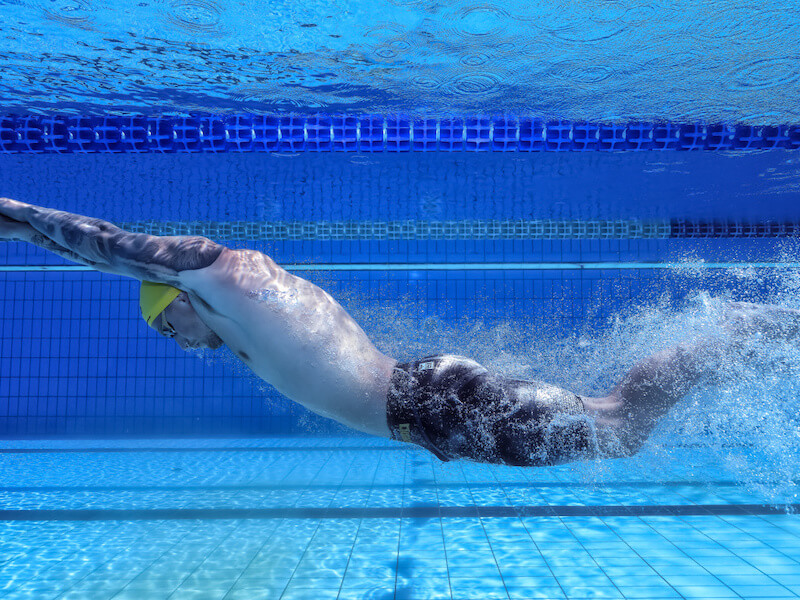
The breaststroke pull is a three-stage upper-body process that you use to propel yourself through the water once you have completed the dolphin kick phase and your body is in a streamlined position facing forward.
The most key moment is where your arm pulls through the water, which propels you forward with speed and power if done correctly. Don’t underestimate the other parts of the pull though, your entire breaststroke is a battle of knowing when and when not to apply friction and force to the water for your gain.
Let’s take a deep dive into the three phases of the breaststroke pull following the glide phase: the outsweep, the insweep, and the recovery.
Outsweep
When you commit to your first breaststroke pull, your body will already be in a streamlined position with your arms facing in front of you. To transition to the outsweep phase, you must change the angle of your hands so that your pinkies are just under the surface of the water and your thumbs are pointing down. Then, sweep your hands below the surface, pushing the water outside the shoulders.
Insweep
Now for the insweep. It’s important that your transition between each phase is smooth and unnoticeable. After many workouts and breaststroke drills, you will be able to achieve the perfect breaststroke pull without even thinking about it.
The insweep can be considered the most critical phase of the breaststroke pull, as it is commonly known as the “power phase.” Following a successful outsweep, your hands and forearms should be in line and be pointing down with your elbows slightly below the surface of the water. Your body position should be reminiscent of when you are getting out of the pool, pushing your palms into the pool’s edge.
Now comes the technical part. You must bring your arms backward, inward, and upward all at the same time, heading toward your chest. Your hands should have accelerated, moving at a faster speed than they did in the outsweep. This is the moment of the breaststroke pull that generates the most power.
Your shoulder and head will rise up naturally during the insweep, giving you an ideal moment to take a tactical breath.
Recovery
Once your hands are together under your chest in a triangle formation, you have officially entered the recovery phase. As the name suggests, this phase is the least physically demanding. Don’t get complacent though, a bad recovery can create unnecessary friction that can slow you down.
From the triangle position, propel both hands forward until your body is left in a streamlined position yet again. Your head will be back under the surface of the water, facing down. Once in this streamlined position the body can rest briefly to reap the rewards of the propulsion gained from the insweep.
Once the arm recovery ends, your body position is back where it was at the start of the outsweep. Rinse and repeat to swim breaststroke perfectly.
How to Improve Your Breaststroke Pull
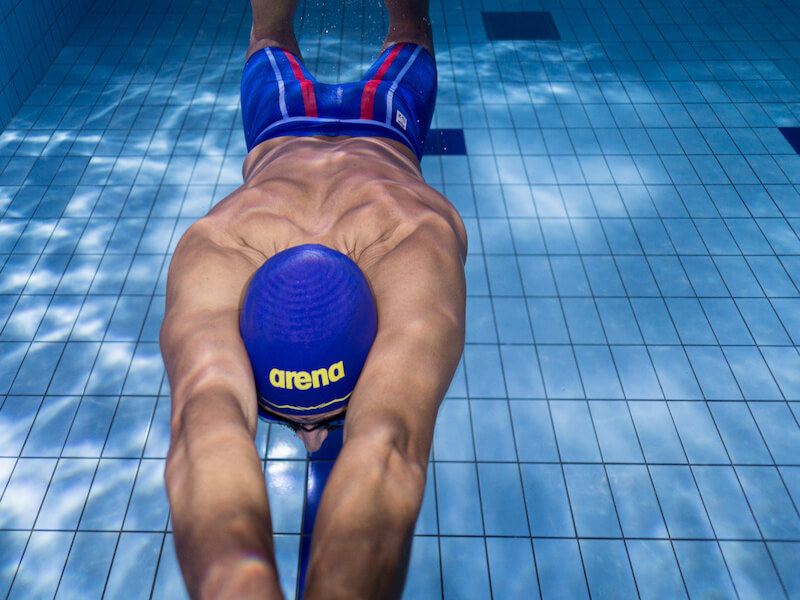
We don’t all have the luxury of having our own personal swim coach when we’re short on ideas. Don’t worry though, just follow these swimming tips and you’ll be well on your way to becoming a hardcore breaststroke swimmer.
Master Your Timing
From freestyle to backstroke, timing is a crucial part of any successful swimming stroke. Breaststroke timing is a simple concept to learn but hard to master.
Essentially, you always want a part of the body propelling you through the water for optimum efficiency. Your arms should be propelling you forward while your legs are in the recovery phase and vice versa.
When perfecting a freestyle pull or backstroke pull, you can let your subconscious take care of the simple flutter kick, while you focus on the nuances of the arm stroke.
When it comes to the breaststroke arm though, there’s a big difference. It only works well if you have good timing between your legs and arms because the breaststroke kick is so much slower. As we mentioned earlier, one part of your body must be providing propulsion why the other is resting.
Be more aware of your timing, and record your results. The best way to be sure is to record yourself with an underwater camera to see where you are going wrong.
Add Training Aids
The minimalism of swimming is what attracts many of us to the sport. But, adding training aids to our workouts can strengthen your breaststroke technique and even rekindle your passion for the stroke. There’s a plethora of training aids to improve your breaststroke pull and other aspects of the stroke. Believe it or not, swim training fins even have a place in breaststroke training.
If you really want to see how effective your breaststroke pull is, take your legs out of the equation. Using a pull buoy leaves your legs floating behind you, allowing your arms to do all the work in what has now become an isolation exercise. If you are finding it hard to pinpoint where your upper-body weaknesses are, this will do the trick. The added resistance is sure to promote muscle growth, giving you superior upper-body strength.
If you still want that upper-body resistance, but you don’t want to sacrifice your legs, you can try using hand paddles for a tough workout. Using a swim training snorkel alongside this allows you to keep your head in the water at all times, adding even more drag.
Perfect Your Position
A streamlined position is essential if you want to cut through the water like a fish. Your body should be in line but not quite perfectly horizontal; your legs need to stay beneath the water for a strong leg kick.
When you breathe during the insweep phase of the breaststroke pull, it should be your shoulders that bring your face above the surface of the water. If you try to lift your head as well, you will sink your hips into the water, which will increase resistance. This common mistake can also lead to back pain in the future.
Bringing It All Together
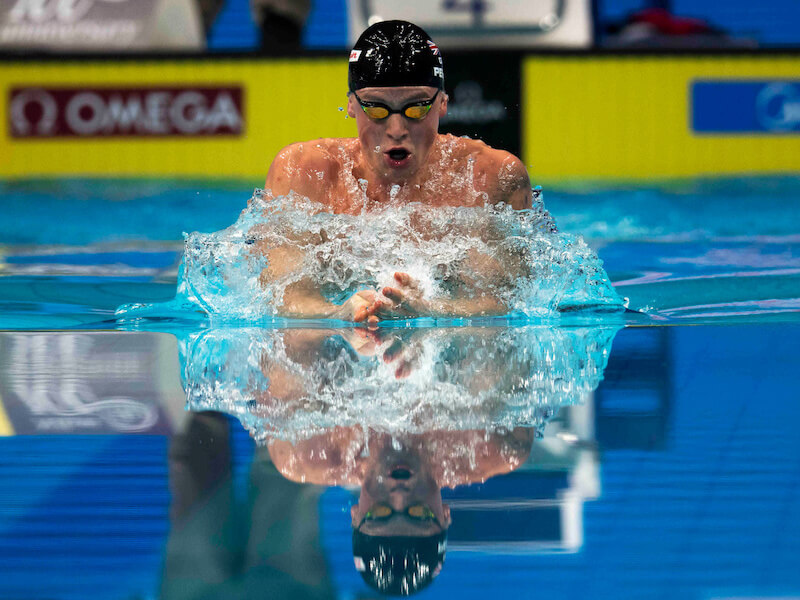
We now know about the three phases of the breaststroke pull, the importance of position and timing, and what the right training aids are to get the job done. Take your training slow and try your best to be cognizant of specific movements and their timing.
Practice the part of your breaststroke that you consider to be weakest by isolating the movement from the rest of your body by using the appropriate training tool. Check out arena’s store to see the huge selection of training tools they have that compliment breaststroke training.
Once you are happy with the results of your practice, you can implement it into your complete breaststroke technique for results that will hopefully surprise you. The breaststroke pull matters, but it’s just the beginning of perfecting your breaststroke technique.
Written by:
Thomas Board
Tom is an outdoor and adventure travel writer and full-time firefighter based in Leeds, UK. He spends his free time summiting the mountains of Wales and wild swimming in the lakes of Snowdonia all year round.
